It took a few days, but we found a place to eat in Phnom Penh that we like quite a bit, Little Chef Wui (at least that’s the name per Google translate; the sign is in Chinese). This place handily became one of our favorite Asian food restaurants on this entire trip. The menu, once translated into English, simply says “delicious, reasonable price”. Yes and yes. $3.50 a plate. It’s located in a small food court off Ke Nou Street, about a fifteen minute walk from where we are staying at The Peak.
For a few nights, and only a few nights, Stephanie and I were able to eat Asian food for the last time on this trip.
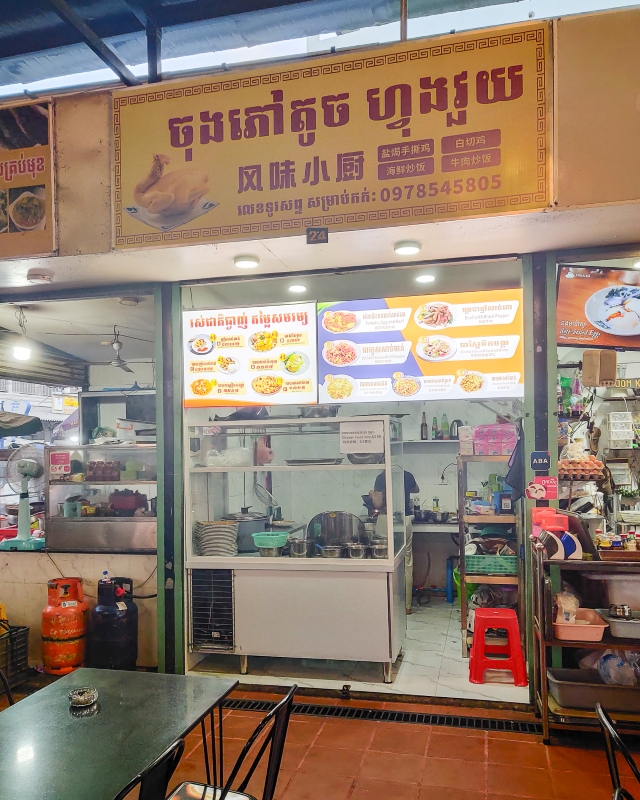
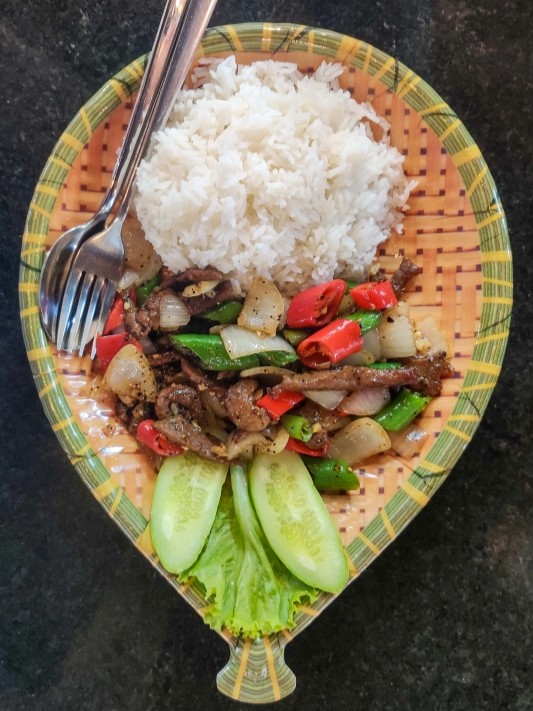
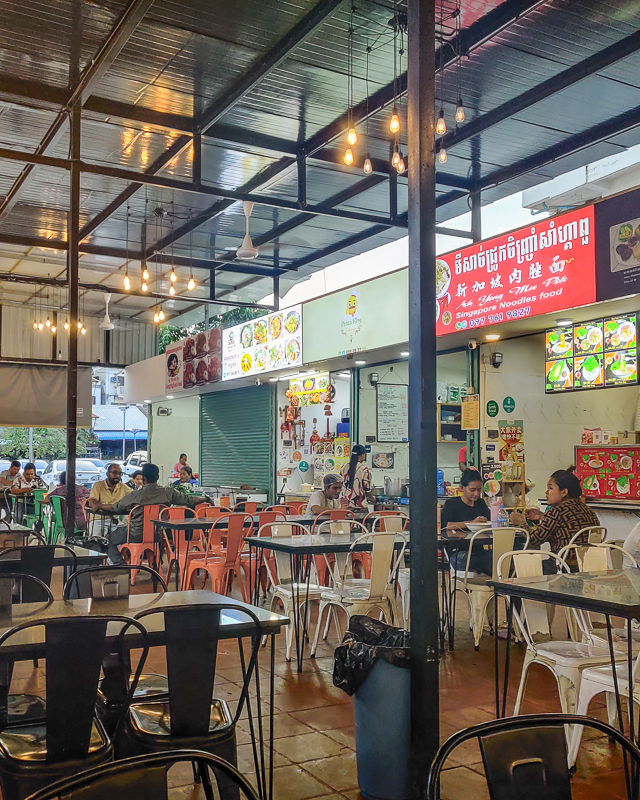
Around the corner on Phreah Sihanouk Boulevard is a stand that sells churros (original, sugar, or cinnamon) for 3,500៛ (about $0.90; chocolate sauce is an additional $0.50). They’re not great, but more than good enough for a dessert on-the-go while taking an after-dinner walk in the street with cars, scooters, and tuk-tuks.
For excellent, non-Asian cuisine restaurant options, head to Big Mama (excellent pizza, bruschetta, and Beerlao), Warsaw (massive quantities of Polish food), or Aussie XL Sports Bar & Restaurant (owned by a couple of Australians; great food and darts).
After suffering in the heat of the day at the Royal Palace, we decided to explore more of Phnom Penh at night. One of the few interesting places open late is Wat Ounalom Monastery, the epicenter of Cambodian Buddhism. And it was closed when we arrived. Numerous temporary structures were in the process of being installed on the grounds for who knows what upcoming event. Oh well.
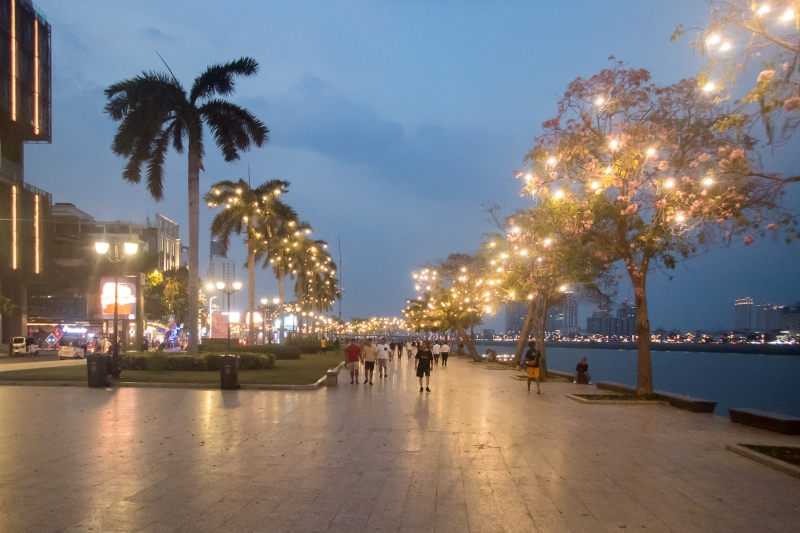
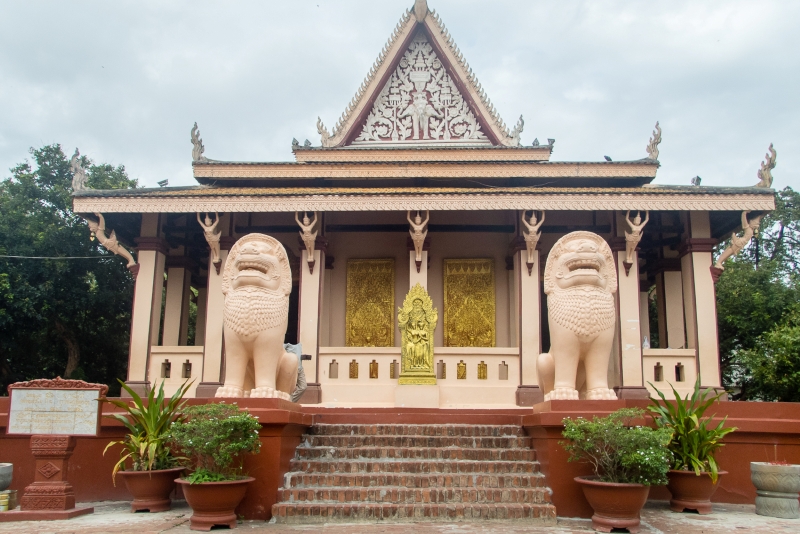
Instead we took a nice long walk along the Tonle Sap River. The promenade is wide and flat. There is plenty of room for vendors, joggers, bikers, and kids playing. Phnom Penh really comes alive at night. After sunset the parks are overrun by local families enjoying the relatively cool evenings. Walking in the parks at night was definitely our favorite activity here.
The next morning we got an early start at Wat Phnom Daun Penh, a small Buddhist temple on a hill on the north side of town. It is probably the most interesting temple we have visited since Chiang Rai, Thailand. For foreigners a ticket costs $1, assuming you enter and proceed up the main steps. If you walk up the hill by following a sloping path on the opposite side, you’ll miss the ticket booth entirely. Up top it’s a nice 15 minute walk around to see the temple.
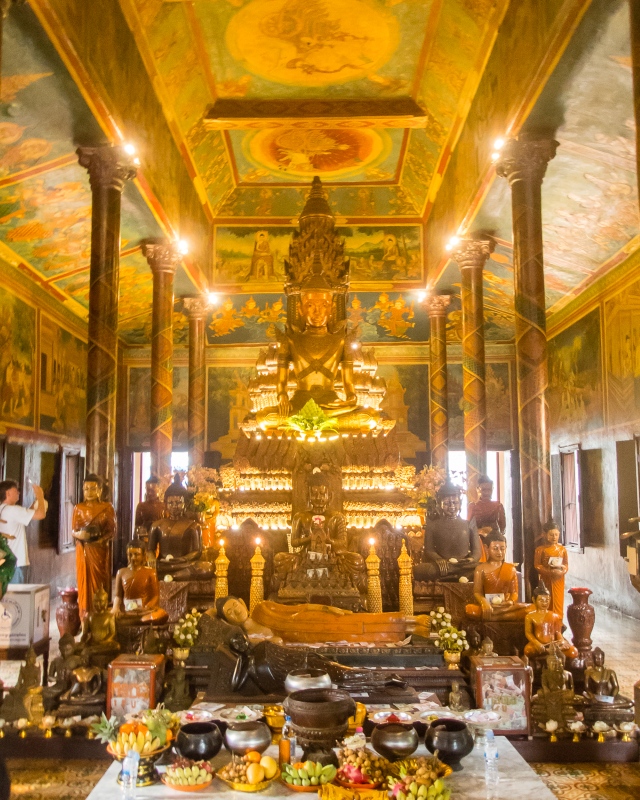
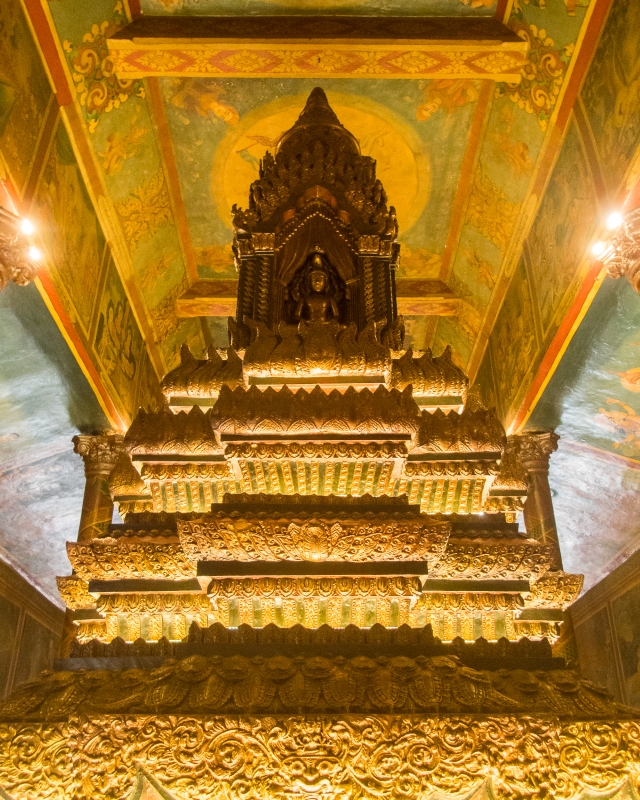
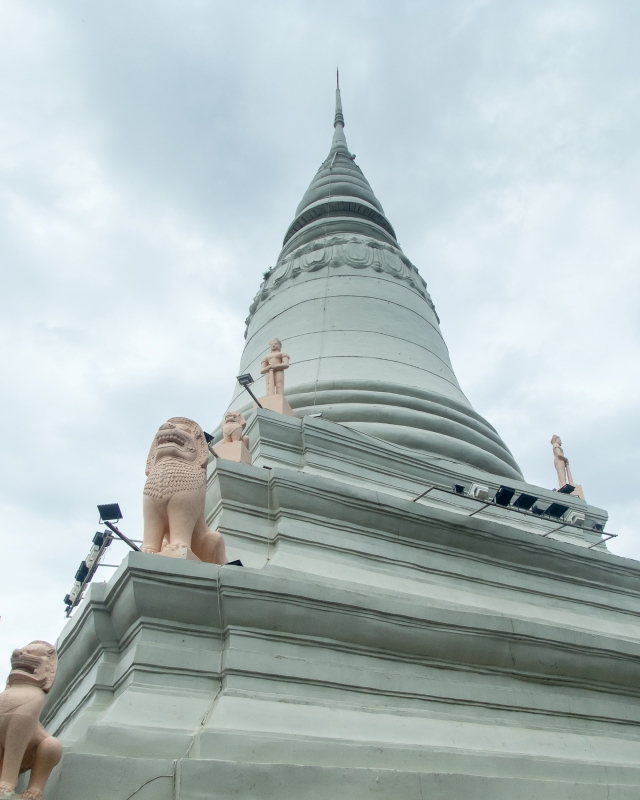
Because it was a cool (about 85° F, or 30° C) and overcast morning, from the temple we walked over to the Central Market, which is located in a large art deco building constructed in the 1930s. Unlike many markets, this is one where you actually have some room to walk and look around. Whether it is like that at night is a different question.
The building has four main hallways shaped like a large cross. Outside sellers fill in the areas between the halls as well. Thankfully, vendor stalls are loosely arranged by type. Fruits and vegetables, seafood, hair and nail salons, clothes, electronics, jewelry and watches, luggage and so on are organized fairly well.
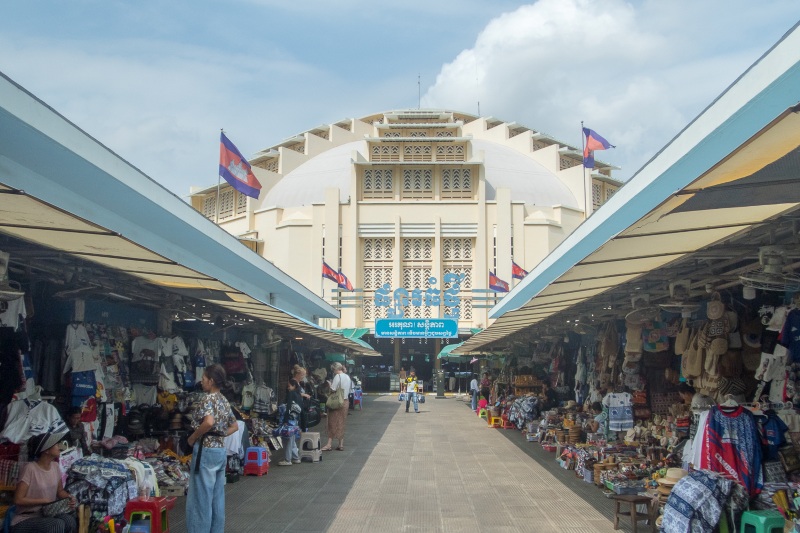
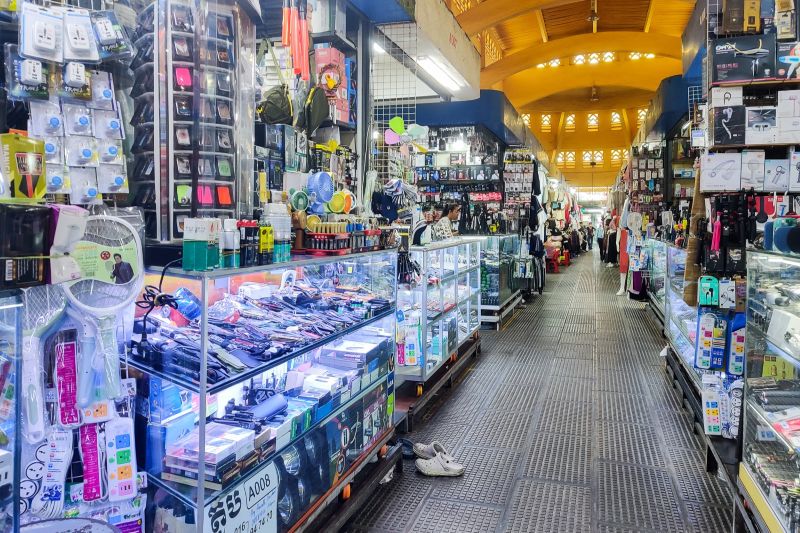
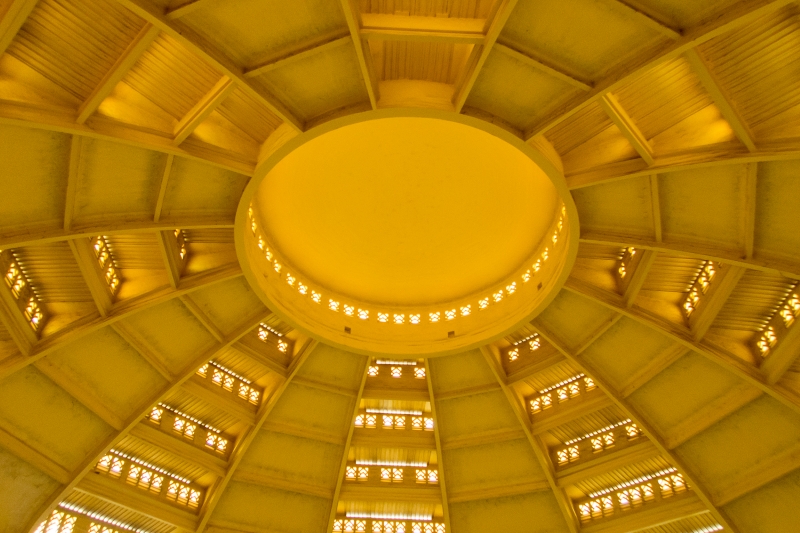
By the time we finished exploring the Central Market, about 11:00 AM, the sun was out, the humidity was rising, and the temperature was well over 95° F. We thought about walking along the Tonle Sap River but quickly decided against torturing ourselves.
Few people are out and about during the day. Mostly just tour groups and tuk-tuk drivers. It’s just too hot and humid to be outside if it is not necessary.
For those of a certain age (okay, older people like us), the most well-known fact about Cambodia is probably the reign of Pol Pot and the Khmer Rouge in the 1970s, marked by mass genocide, and The Killing Fields, the 1984 movie about it.
Tuol Sleng S21 is one of hundreds of former Khmer Rouge prisons and torture centers across the country. This particular one, in a school in Phnom Penh, is now a museum and memorial to those killed in the genocide. The cost for a foreigner to enter is $5 per person, and an additional $5 if you want an audio guide.
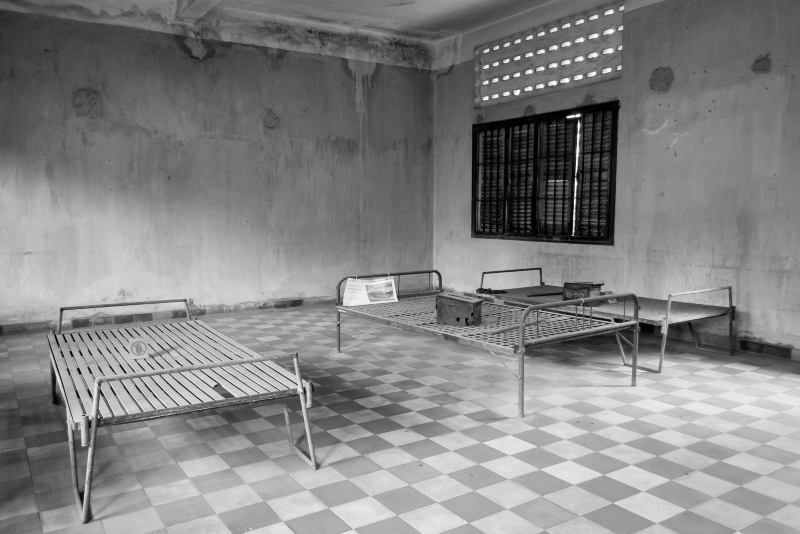
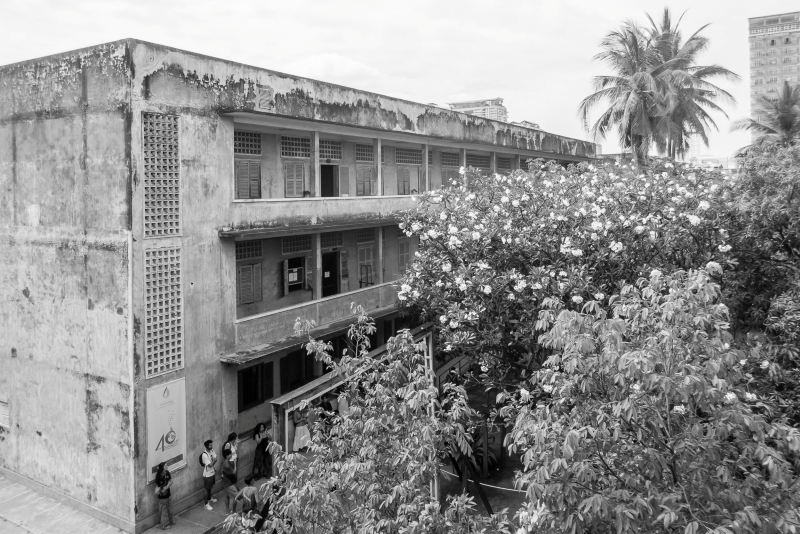
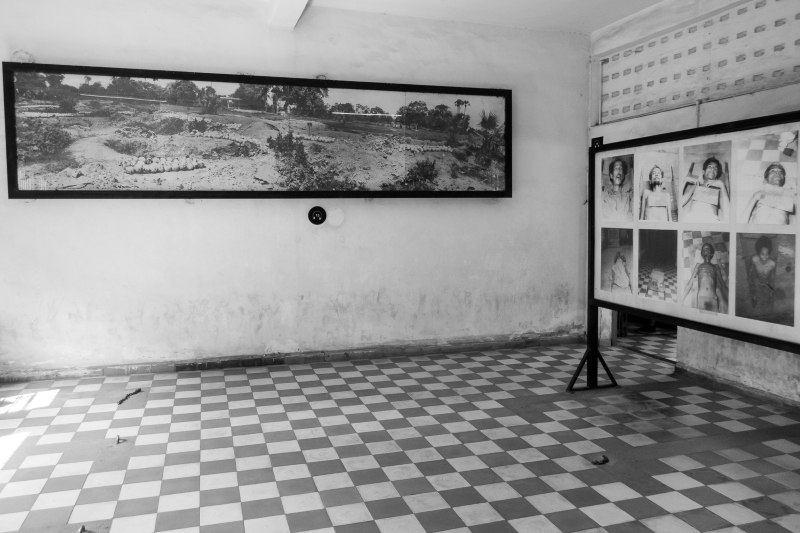
Several of the school’s buildings are still standing. Rooms house numerous photographs of those who were detained here, including quite a few graphic images. There are also exhibits on the Khmer Rouge, prison conditions, cells, torture, and war crimes tribunals.
A few survivors (young children in the late 1970s; now in their early 50s) are on site selling books of their experiences.
This museum is best visited first thing in the morning before it gets too hot. While there is shade, there is no air conditioning. Bring your own water, too. We did not. Afterwards the first thing we did was find a nearby convenience store to buy cold drinks.
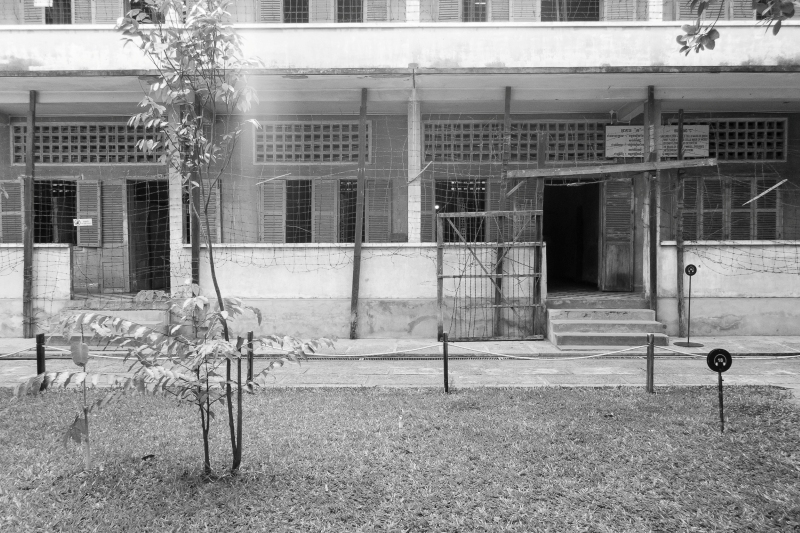
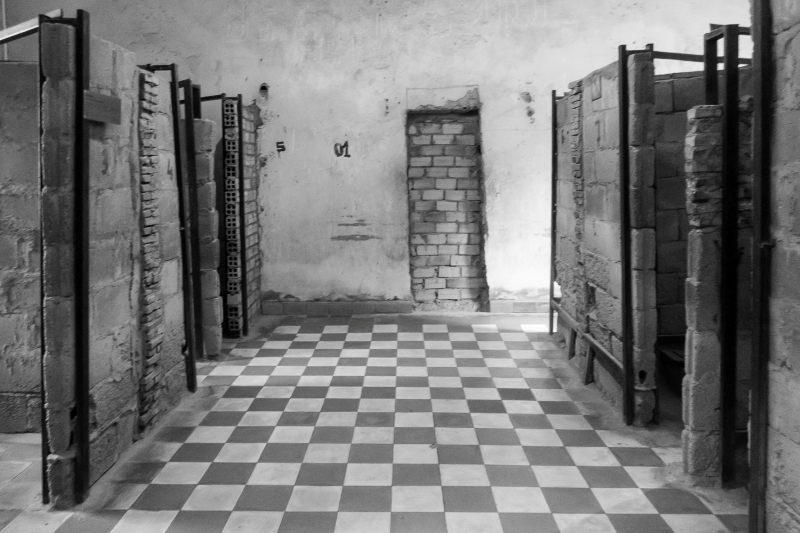
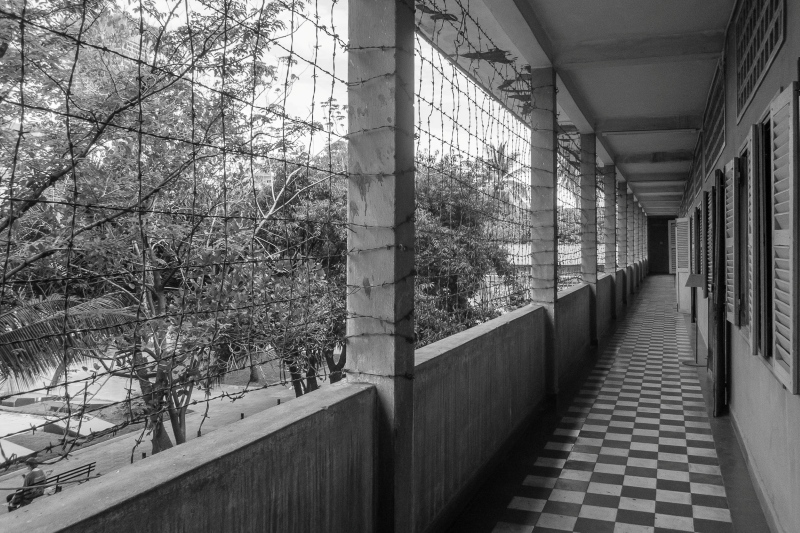
The Choeung Ek Killing Fields is located several miles away. It is one of dozens of killing fields and mass burial sites across the country. This particular one is associated with Tuol Sleng S21. We thought about visiting Choeung Ek but in the end skipped it. We just did not have enough interest in the large outdoor memorial and cemetery to brave the sun and heat.
Phnom Penh turned out to be the laziest ten days we have spent on this trip. We went to the Royal Palace, Wat Phnom Daun Penh, the Central Market, and Tuol Sleng S21 – totaling no more than about three hours of actual visiting time altogether.
Considering the size of Phnom Penh (2.5 million people; twice the size of the Memphis metropolitan area), we were a bit surprised that there is not a lot more to do here. Maybe there is, and we just did not realize it. Either way, perhaps this is actually a good thing, because Phnom Penh does not feel touristy in the slightest.
The main tourist attraction is Phnom Penh appears to be NagaWorld, a massive luxury hotel and casino. We walked by it almost every day but for some reason never went inside.
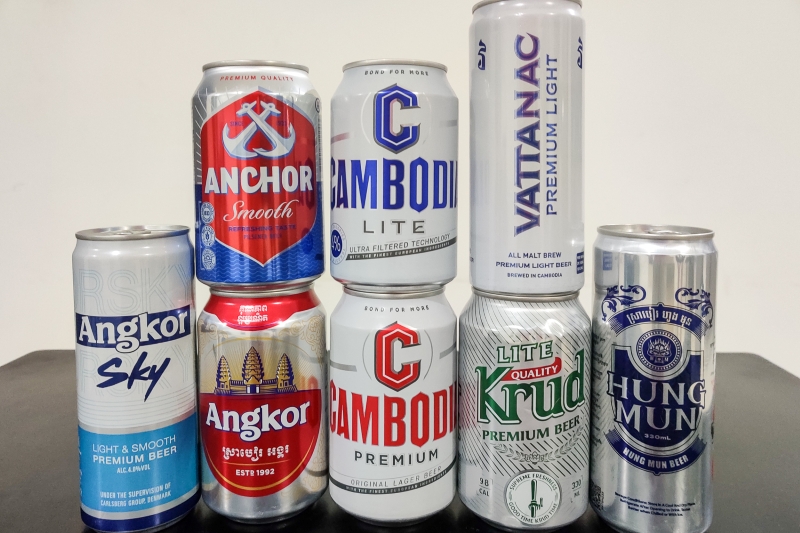
Yes, we did a quick round of Cambodian beer tasting first thing upon arriving in Phnom Penh. Not good. Not at all. We tried eight different beers. Only two made the grade. Angkor is pretty decent. Not great, but good enough. The clear winner by default. Angkor Sky tastes like watered-down Michelob Ultra. (Wrap your head around that for a second. It’s watered-down watered-down beer.) It is second best. Five are so mediocre as to not be worth discussing.
The last one, Anchor Smooth (a Singaporean beer), earned the distinction of being the second beer we’ve ever dumped down the sink instead of drinking. Perhaps we are getting more particular as we get older.
Finally it is time to head to our final destination on this trip. After a six hour bus ride (first class on VET Air Bus Express), we will be in Siem Reap.
Garrett and Stephanie
If you have not already done so, read our other post about Phnom Penh:
Phnom Penh, Cambodia (March, 2025, Part I). Mixing and matching currencies; living in Chinatown; visiting the Royal Palace.
For additional posts about Cambodia, or elsewhere in the world, check out our Travel Blog. It contains collected links to all of our travel posts.
Want to subscribe (or unsubscribe) for email notification of new blog posts? It is only two to three emails a month. Send your name and email address to slowtravelchronicles@gmail.com, and note subscribe (or unsubscribe) in the subject line. All email addresses will be kept confidential and not sold to any third-party. You won’t get any marketing junk or sales pitches from us.
